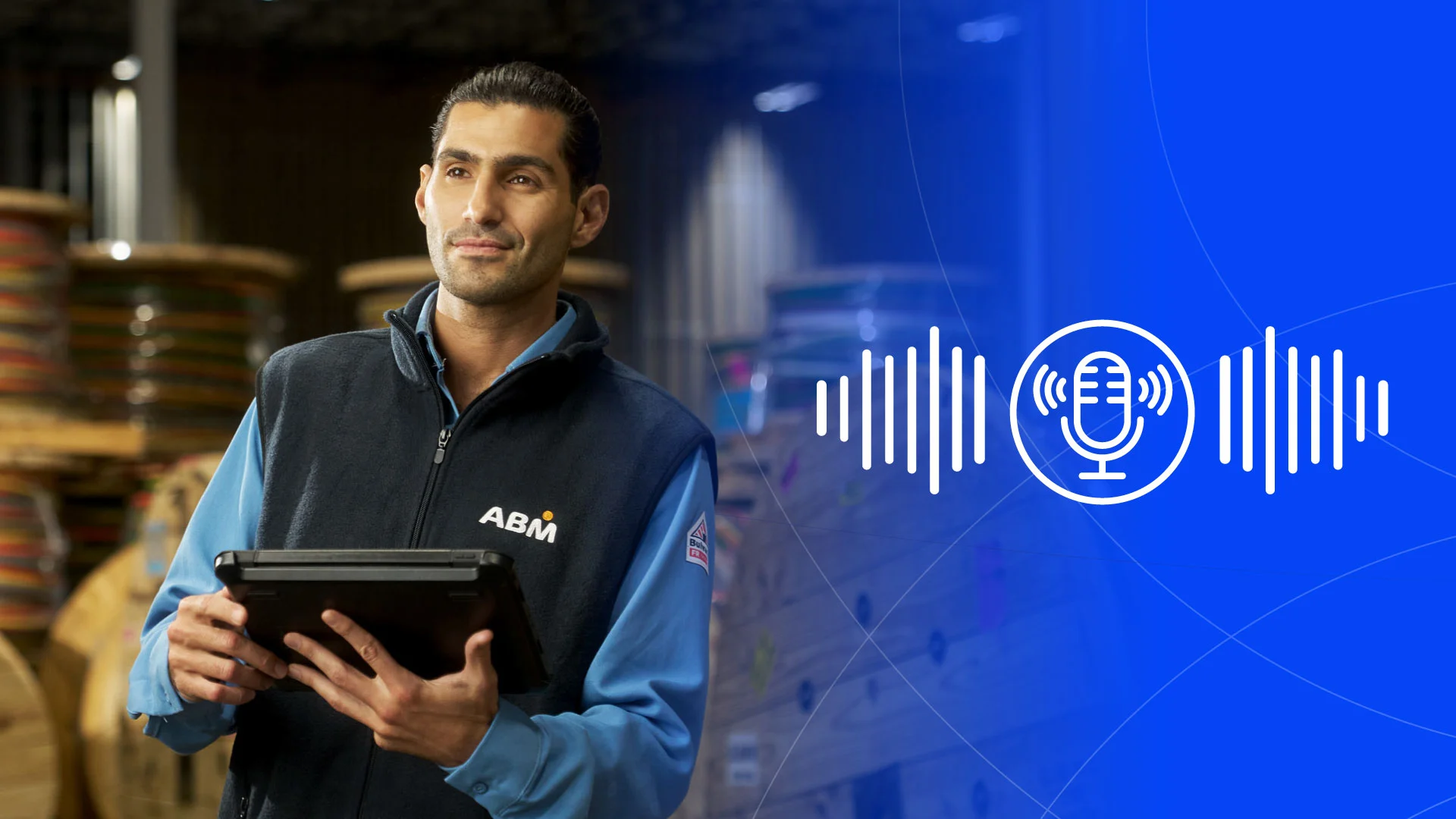Cost control: Using technology to manage expenses in industrial facilities
Manufacturers are squeezed from every angle: regulators are calling for stricter environmental protection and safety protocols; customers have high expectations for product availability and customization; and policy changes are impacting everything from the supply chain to the labor force. That pressure is felt at every level of the business, including the factory floor.
Proactivity is the name of the game
Downtime is the single largest cause of lost production time. It puts immense pressure on facility managers to find ways to reduce downtime, both planned and unplanned. For that reason, manufacturers are focusing a lot of their attention on using new technologies to enable better preventive maintenance programs.
The current approach to preventive maintenance is based on usage or time passed. Machines and equipment are serviced after a certain number of cycles or days. Often, those service schedules are based on the manufacturers’ recommendations. But recommendations don’t always align with reality. Most facility managers know this, and overcompensate with more aggressive maintenance scheduling, leading to unnecessary labor and parts costs.
Cost control: Using technology to manage expenses in industrial facilities
Introduction
Manufacturers are squeezed from every angle: regulators are calling for stricter environmental protection and safety protocols; customers have high expectations for product availability and customization; and policy changes are impacting everything from the supply chain to the labor force. That pressure is felt at every level of the business, including the factory floor.
Under Pressure and Over Budget
Facility managers are expected to respond to these pressures while also keeping costs under control. But until recently, they had limited tools at their disposal. Historically, there’s always been some guesswork at play when creating operating budgets. Facility managers make educated guesses on workforce utilization, supply needs, and maintenance scheduling based on previous experience and historical data. But educated guesses can quickly lead to cost overruns.
Connected Technology Offers Relief
Fortunately, facility managers have a wealth of new technologies at their disposal, and most manufacturers are taking advantage of that. The Industrial Internet of Things (IIoT) is bringing what was once science fiction into today’s reality.
That’s what the IIoT does for your facility. It puts critical data about your facility, and the people and equipment inside of it, at your fingertips. But it doesn’t stop at delivering raw data. Through artificial intelligence and ever-evolving analytical advances, IIoT technologies can offer insights and automation that enable better operational effectiveness, and ultimately, cost control.
With the IIoT, sensors monitor equipment performance and alert facility managers when it dips below optimal levels. Engineers can then respond based on need.Using data from these sensors, facility managers can more accurately predict how often maintenance is needed and the true lifespan of components that regularly need to be replaced.
Small components like belts and hoses may not be costly individually, but their costs multiply quickly when aggregated across the entire facility and enterprise over time. Replacing them only when needed can result in significant cost savings.
Improve Labor Utilization with Better Data
Between a shortage of skilled labor and rising labor costs, facility managers are under immense pressure to implement smarter labor utilization practices. Engineers may work on a schedule, but equipment failures don’t. Real-time asset monitoring enables facility managers to refine workforce planning based on when there’s an actual need. This condition-based approach to maintenance enables employees to be more productive and flexible.
It also takes the guesswork out of workforce planning during swings in production. Over time, analytics tools can learn trends and provide more precise adjustments to prevent unnecessary labor hours. Artificial intelligence, combined with human observation and experience, enables laser-sharp workforce planning like never before.
Shifting from Prevention to Prediction
IIoT technology doesn’t just monitor, it learns. Through machine-learning, IIoT platforms can predict when equipment failures are about to happen and generate automated work orders so engineers can take early action.
A sophisticated network of sensors, connected to cloud-based systems, can notify engineers of conditions, such as high temperatures or vibration, that may lead to equipment failure. This puts the factory one step ahead of asset failures that can lead to costly shutdowns and emergency repairs.
Looking back to stay ahead
Over time, as more data is collected, the IoT enables facility managers to better predict the circumstances —whether they be processes or asset conditions—that contribute to unplanned downtime and equipment failures. By aggregating siloed information like work order history and environmental conditions into digestible reports, these systems enable facility managers to identify which assets are driving the most cost overruns and implement processes to keep those costs in check.
In the event of an emergency, the data becomes a valuable investigative tool. Facility managers can assess the conditions that led to the emergency more precisely. Using that data, they can isolate the root cause and take a cost-effective approach to preventing it from happening again.
Taking the guesswork out of safety programs
Keeping employees safe is always a top priority for manufacturers. In addition to the pain and suffering they cause, accidents can be a major drain on productivity and generate costs that spiral far beyond the factory floor. Any conversation around controlling industrial facility maintenance costs must include safety programs. The IIoT offers a number of tools that enable stronger, smarter risk management. Predictive maintenance programs enabled by the IIoT don’t just extend the lifespan of critical assets—they also help reduce equipment-related accidents. Sensors that pinpoint the source of equipment failures reduce the likelihood of an engineer incurring an injury while making repairs. Many of the newer technologies go a step further, integrating biometrics and robots into the facility to prevent accidents.
Bringing automation to the floor
Robotics has become a key asset for manufacturers, but there’s always been a safety concern surrounding whether the robots would cause more accidents due to their autonomy. These concerns place limits on how much automation is implemented on the factory floor.
Advances in computer vision and sensor technology allow robots to work much closer alongside employees. With robots programmed to stop when sensors detect a person or object has gotten too close, manufacturers can better leverage the efficiencies of robotics and mitigate the risks that come with autonomous machinery.
Personal protective equipment, plus…
Wearable tech is emerging as a promising new tool in improving worker safety. They fill a critical gap in safety information that enables facility managers to better prevent and investigate safety incidents. Wearables go beyond smart watches—they can be embedded in vests or worn as glasses—and don’t intrude on employee mobility. They open a new level of features that keep employees safe:
- Monitor employee vitals to detect stress and fatigue.
- Track environmental conditions, such as temperature, for employee safety.
- Communicate with nearby equipment when an employee is too close.
Better reporting for better safety training
Much like maintenance, safety training schedules are based partially on guesswork. Even if incident reporting is centralized, it’s impossible to track all of the circumstances that lead to accidents using traditional means.
With equipment, robots, and employees outfitted with sensors and beacons that communicate with advanced analytics tools, facility managers can get a broader understanding of all of the factors that contribute to creating
a safe environment.
Using systems that bring together employee health and performance data, incident logs from robotics, and data on environmental conditions, facility managers can access accurate, real-time data on the key causes of safety incidents. This enables them to monitor trends and determine which process improvements or training opportunities to focus on. The result is safety training with a measurable impact on worker well-being and your bottom line.
Looking beyond the factory floor
Plants operate around the clock, and the activity inside the facility extends beyond the factory floor. When production demand is up, more employees are using the restrooms, having meals in the break room, and parking their cars in the lot. New technologies allow for greater efficiencies in maintaining these areas as well. Similar to the cost of small machine components, identifying cost savings for cleaning and hygiene supplies can be a worthwhile exercise when considering expenditures over time, and across the enterprise. In restrooms and break rooms, sensors on soap dispensers, trash cans, and hand sanitizers can alert the cleaning staff when they need to be refilled or emptied. This ensures that they’re not under- or over-stocked. Access to this level of insight enables more effective labor utilization.
Employees aren’t just using more supplies when they’re working around the clock. Their energy consumption also increases. Parking lot lighting can be outfitted with sensors to get brighter when they sense motion, enabling facility managers to better protect employees working late night and early morning shifts while also reducing a major driver of energy costs.
Collaboration brings it all together
With such an emphasis on new technologies, it may seem that the IIoT stands to replace the workforce in the facility. While some roles are being replaced, many are simply shifting. Forward-thinking facility managers are using these tools to enhance employee effectiveness and flexibility and lower costs. The data doesn’t replace human knowledge and planning; it augments it.
While sensors are located throughout the facility, cloud-based software brings them all together. Facility managers can access a wealth of data collected by the IIoT from mobile devices, enabling them to respond to factory conditions more quickly.
Cloud-based systems eliminate information silos, as engineers, cleaning staff, and line workers can access critical information on safety conditions and work order statuses using smartphones and tablets. By empowering their workforce with on-the-spot access to the data they need, facility managers reduce the inaccuracies and productivity losses that are common with more antiquated, manual methods of data collection and communication.
Connecting the Enterprise
Facility managers are expected to know their facility inside out. Until recently, there were limits on just how much they could know. The IIoT puts it all on the table—better yet, it puts it in their hands. With people and technology working hand-in-hand, facility managers can rein in costs with more precision than ever before. They can isolate real-time, granular data to make on-the-spot decisions, or get a bird's-eye view of broader trends to restructure labor utilization, safety, and maintenance programs.
While there are still many learning curves to overcome, IIoT technology will only grow more sophisticated and accessible. Facility managers can see real cost savings by implementing these technologies now and preparing for the new tools and insights that will be available in the near future.
Experience a technology-enabled facility team
ABM understands the power of cutting-edge technologies to make manufacturing facilities energy efficient, clean, safe, comfortable, and compliant. We self-perform industrial maintenance and cleaning services to ensure reliability and cost control. Our technology-empowered workforce keeps you one step ahead of unplanned shutdowns, safety incidents, and changes in customer demand.
The result? An energy efficient, clean, safe, comfortable, compliant facility that helps you reach your production goals.
Our team understands your operations and cares for your facility like you do. Count on us for proven janitorial, sanitation, engineering, electrical testing, HVAC services, and more.
Call us at 866.624.1520 if to learn more about any of these services for Industrial & Manufacturing facilities:
- Electrical & Lighting
- Energy Solutions
- Facilities Engineering
- HVAC & Mechanical
- Integrated Facility Solutions
- Janitorial
- Managed Staffing
- Mission Critical
- Specialty Services
[[inline-cta]]





